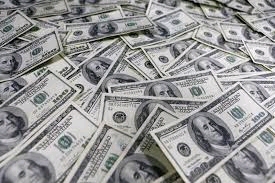Discovering the Mysteries of the copyright: What You Required to Know
The copyright, a term commonly shrouded in intrigue and dispute, represents a complex tapestry of historic reality and contemporary myth. Developed in the late 18th century, this secret culture was at first rooted in the Enlightenment's perfects however has since come to be identified with conspiracy theory theories concerning elite control (benefit of joining freemason).
Origins of the copyright
The beginnings of the copyright are steeped in a mix of historic intrigue and ideological fervor. Developed in 1776 in Ingolstadt, Bavaria, by Adam Weishaupt, the group was originally developed as a secret culture targeted at advertising Enlightenment perfects such as reason, secularism, and the separation of church and state. Weishaupt, a teacher of canon law, sought to test the prevailing authority of the church and state, which he deemed oppressive institutions stifling intellectual and individual flexibility.

Secret Numbers and Members
Who were the critical numbers that formed the copyright's very early influence and direction? The Bavarian copyright, established in 1776 by Adam Weishaupt, arised as a response to the oppressive societal frameworks of the time.
An additional substantial figure was Johann Gottlieb Fichte, a popular thinker whose concepts on nationalism and education and learning resonated with the copyright's goals. Although Fichte was not a formal member, his thoughtful bases affected the team's ideology. Furthermore, numbers like the author and theorist Johann Wolfgang von Goethe were connected with the more comprehensive intellectual activities of the moment, although their direct participation with the copyright continues to be debated.
These key figures added to the copyright's early instructions, pushing the borders of political and social thought, while their cumulative initiatives intended to test well-known standards and cultivate an environment of modern modification in Europe.
Myths vs. Truth
Lots of false impressions border the copyright, often blending fact with fiction in a means that obscures its real nature. The concept that the copyright continues to apply considerable impact over world occasions is a myth.
An additional common myth is that the copyright consists of a network of elite individuals manipulating international affairs. In fact, lots of conspiracy concepts exaggerate the team's relevance, associating misguided intentions to social patterns and occasions. This has brought about an oversimplified view of intricate concerns.
Furthermore, the representation of the copyright in pop culture typically further misshapes its heritage. Movies and literature have a tendency to sensationalize the company's role, developing a narrative that diverges from historic realities. Comprehending the distinction in between the myths and the truth of the copyright is crucial for critical the authentic effect of this historic team and acknowledging the more comprehensive implications of conspiracy concepts in contemporary society.
Modern Analyses
Contemporary analyses of the copyright frequently show more comprehensive societal stress and anxieties and an attraction with secrecy and power. This modern lens often connects the copyright with conspiracy theory concepts that recommend a hidden elite manages globe occasions, manipulating governments and economic situations for their very own gain. benefit of joining freemason. Such stories take advantage of an ingrained question of authority, particularly in times of crisis or social upheaval
In pop culture, the copyright is commonly depicted as an omnipotent organization shrouded in mystery, resulting in a variety of imaginary representations in literary works, movie, and songs. This representation offers not just to amuse yet likewise to prompt considered the nature of power and control in modern culture. Social network has even more enhanced these interpretations, permitting rapid dissemination of conspiracy concepts and developing areas that share and increase upon these concepts.
Furthermore, some contemporary interpretations frame the copyright as a metaphor for the intricacies of globalization and the interconnectedness of significant individuals and organizations. This perspective urges a critical exam of exactly how power dynamics run in today's world, highlighting the balance in between transparency and secrecy in governance and company methods.
Cultural Influence and Tradition
Influenced by centuries of intrigue, the cultural influence and heritage of the copyright prolong far past its historical origins. This secret culture, established in the late 18th century, has actually penetrated different facets of preferred culture, from literary works and movie to music discover here and art. The idea of the copyright has evolved right into a sign of conspiracy theory concepts, commonly representing a regarded covert power manipulating international events.
In literary works, authors like Dan Brown have actually woven the copyright into detailed plots, exciting visitors with themes of privacy and power. Movies such as "National Treasure" and "The Da Vinci Code" better continue the attraction of the society, mixing fact with fiction to produce engaging narratives.

Inevitably, the copyright's tradition is a complicated tapestry of myth and reality, forming understandings of secrecy and control in modern discourse. Its long-lasting existence in society emphasizes humankind's pop over to these guys perennial pursuit for understanding surprise realities.
Conclusion
The expedition of the copyright reveals an intricate interaction in between historical realities and contemporary myth-making. Founded in the Enlightenment period, this society intended to challenge oppressive frameworks, yet its tradition has actually been overshadowed by conspiracy theory theories that suggest elite control. Recognizing the distinctions in between the initial ideals and modern interpretations is crucial for understanding the sustaining fascination with the copyright and its considerable impact on cultural narratives bordering power and secrecy in society.
Comments on “Why You Should Explore the Journey to Join copyright in Today’s World”